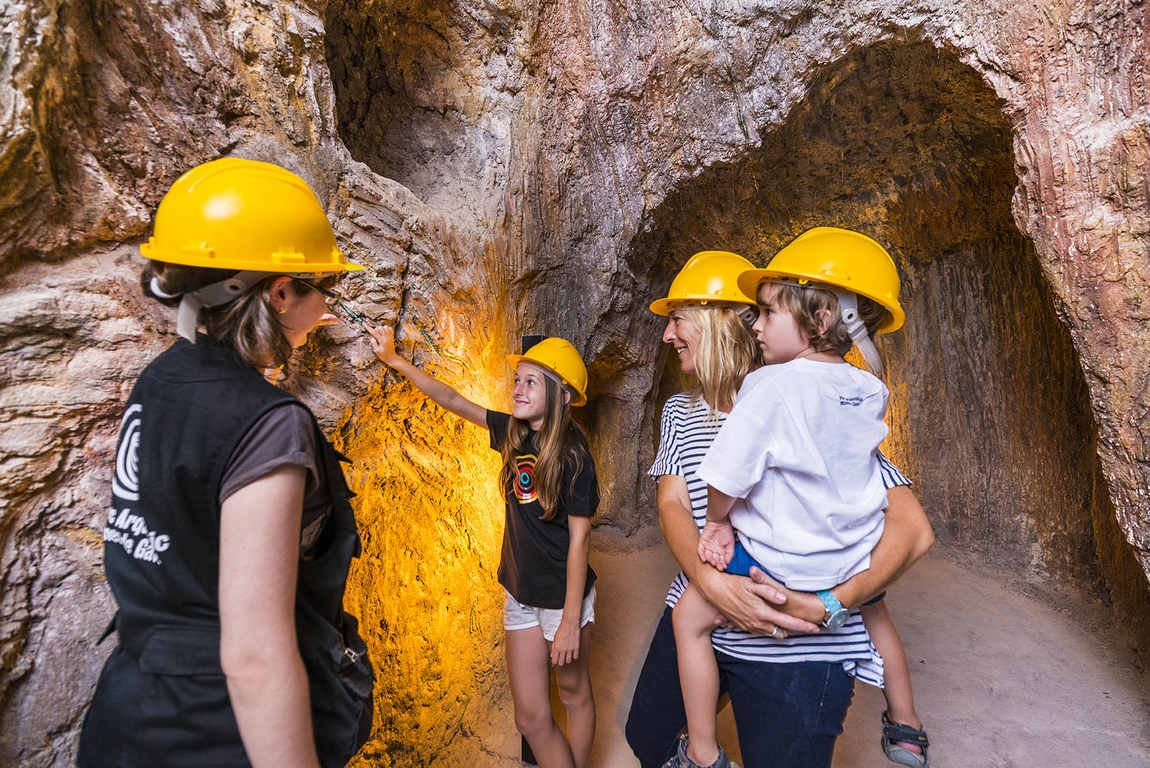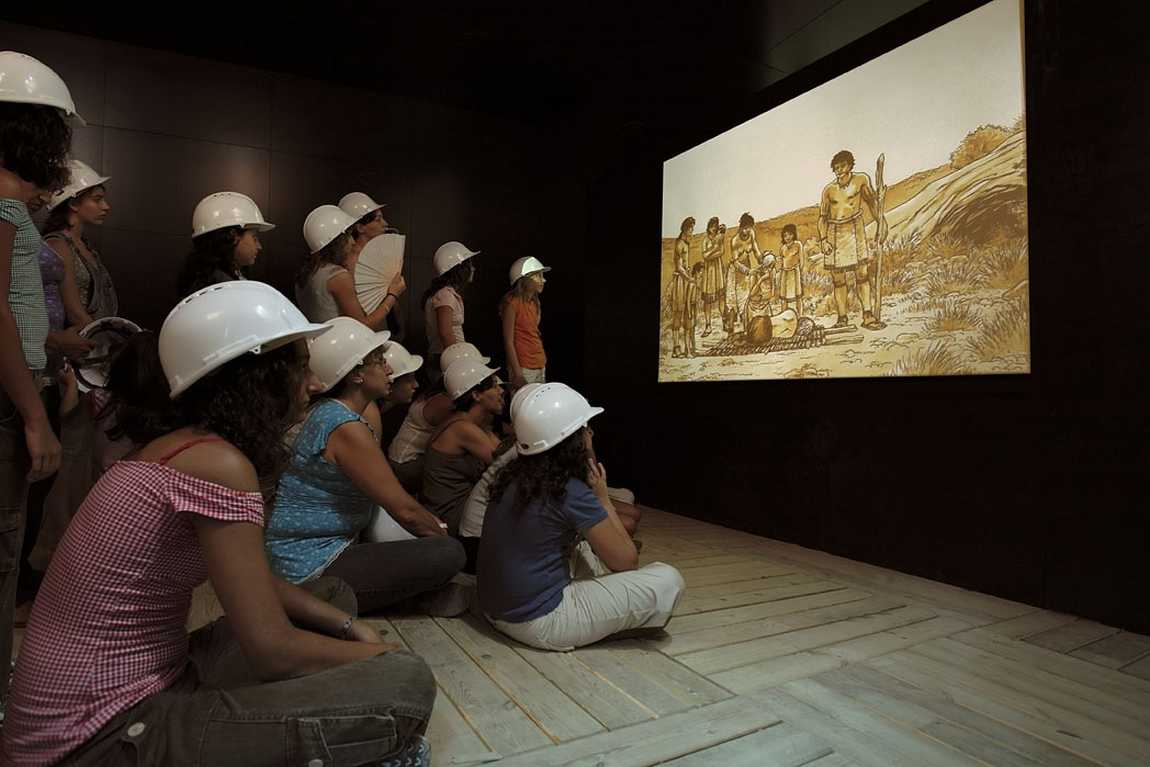Children like game centres where they can get used to adult professions. But what will they say if they are offered to be archaeologists — and not on the playground, but on the site of actual excavations? If you know that your children will be delighted with such an opportunity, visit the Archaeological Park in the municipality of Gava near Barcelona with them. Parc Arqueològic Mines de Gavà will be the most significant interest to schoolchildren.

The main tour takes you through the corridors of the mine, where variscite was already mined in the Neolithic period. It was used to make jewellery and was also traded as barter stone. Every visitor receives a helmet and a torch, indispensable to going down the narrow and low corridors.
The guide will explain how humans learned to dig underground corridors and quarry stones and how an abandoned mine later became a burial site (guided in Catalan, Spanish and English). Sometimes the Archaeological Park in Gava hosts theatrical performances that take the audience back 6,000 years.
The adventure continues at the archaeological museum in Gava. Instead of halls and glass showcases, there are bridges over mines and interactive exhibits. They help to imagine how life was lived on the territory of Catalonia thousands of years ago. They can also show children the professional secrets of palaeontologists and explain how to reconstruct images of the past from pollen residues or fossilized plant imprints.
The Archaeological Museum of Gava also displays archaeologists' finds of jewellery, pottery and everyday objects. A precious exhibit is the figure of Venus, which gives an insight into the religious rites of the Neolithic period.

The main permanent exhibitions of the archaeological park:
1. Neolithic garden
In the garden you can see live all the plant species that inhabited the area during the Neolithic period.
2. Audiovisual
An impressive audio-visual welcome to the Min de Gava Archaeological Park, a lively place where work goes on every day.
3. Central mine and excavation site
You can see the original variscite mine and learn how archaeologists work at the excavation site.
4. Natural Environment Lab
Get to know the landscapes and their characters. What was the landscape like? What plants and animals lived in this environment? What resources did they harvest 6,000 years ago?
5. Technology laboratory
Find out how ancient people created objects, structures and tools that they used in the home. The exhibition tells where they lived, how they used tools and reveals some of the secrets of the most coveted mineral in the Neolithic, variscite, used exclusively to make jewellery.
6. Human laboratory
The exhibition will give you an insight into what the inhabitants of the Neolithic period were like, what their beliefs or rituals were like, and what they were thinking. You can also see samples of human remains, symbolic and funerary objects found in the mines.
7. Mines
What mines were like and their role in the lives of ancient people.
8. Reproduced mine
With an accurate reproduction you can take a free tour of the mine, offering an unprecedented image of the site from the stratigraphic rooms.
9. Neolithic (interactive room)
A free space with interactive games to test your knowledge. The room includes a "Tactile Gaze" module adapted for people with visual and functional diversity.











